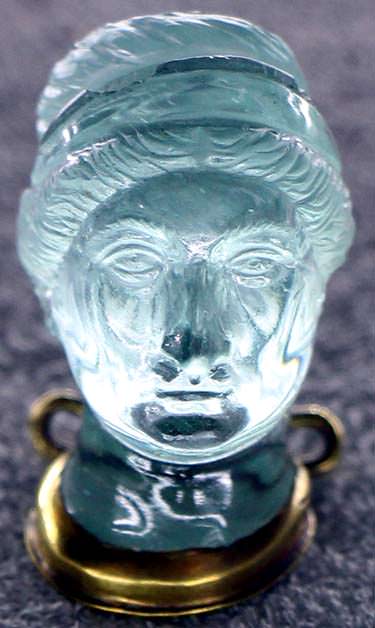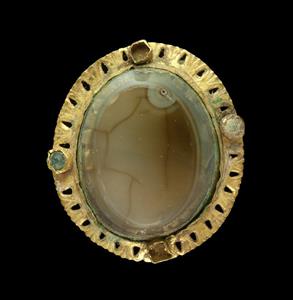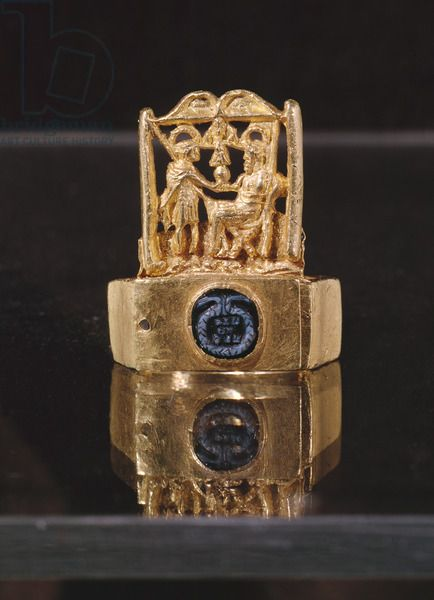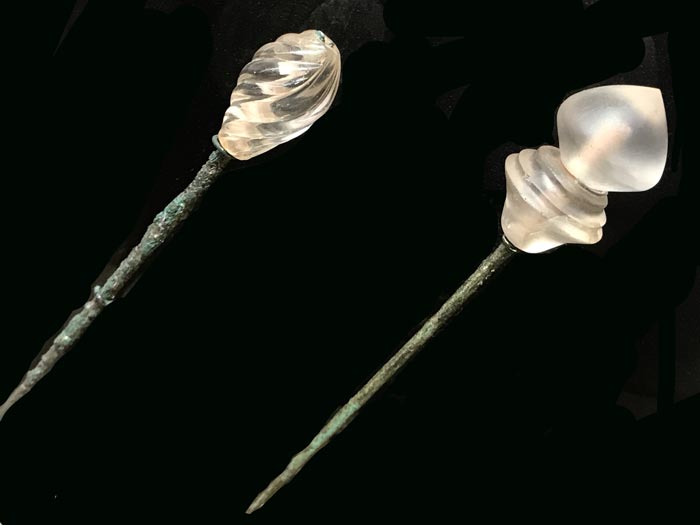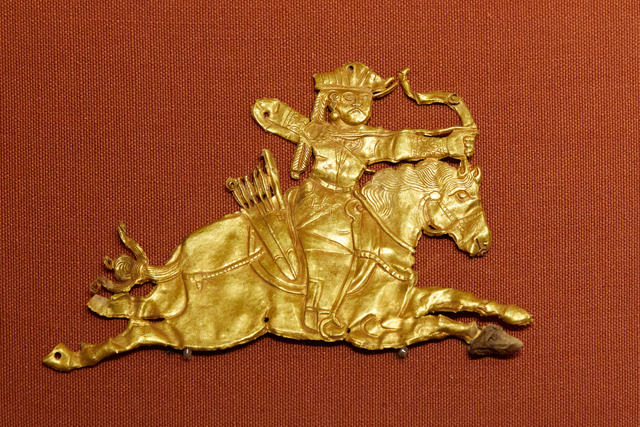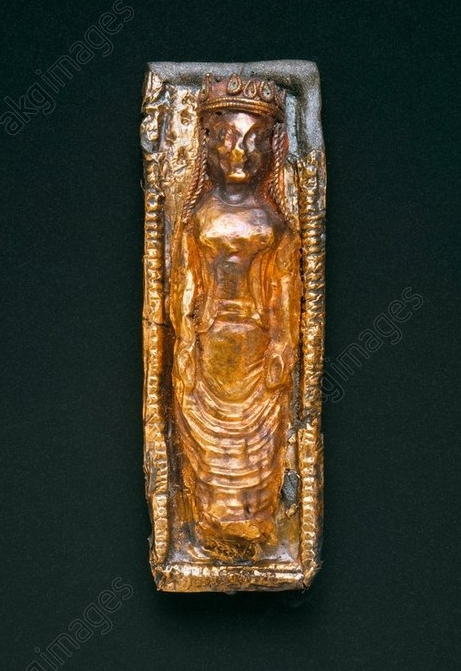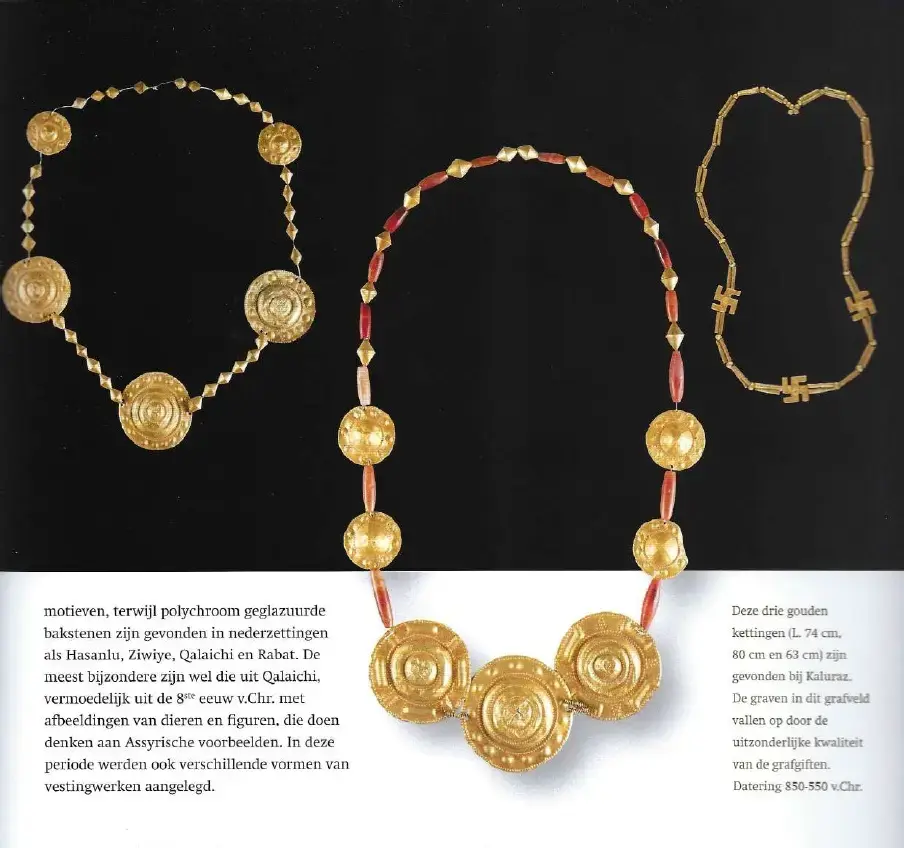| Agrippina the Younger |
|---|
 Picture from the website of Musée du Trésor de la Cathédrale >> Cameo from Roman times |
 |
Cape fibula with a sardonyx cameo depicting bust of a woman from the age of Caligula and Claudius, set in a gold frame with stones and pearls from the 13th century. 32 / 28 mm
In the Cathedral Treasury Museum in Aosta
Description: two-layer Sardonyx cameo depicting the bust of a woman facing right. It presents itself with a tunic draped on the shoulders and a cape that covers the head, while the face appears fine and delicate, with a small and rounded eye, a graceful nose with a straight profile and a small mouth. The hair seems to be divided into two orders, the upper one with strands parallel to each other and the lower one with small strands in the form of a snail.
Type of ornament: type I crown, variant a. The woman wears a laurel wreath.
Source: Grossi “CORONAE, STEPHANAI E DIADEMATA…”, pp 413
“Agate cameo from the 1st century depicting Agrippina the Younger, set in the centre of a 13th century in gold fibula with precious stones and pearls, Italy. Aosta, Museo Del Tesoro”
Photo by DeAgostini/Getty Images
source
| Antonia Minor |
|---|
 picture from the catalog National Archaeological Museum of Florence |
 https://books.openedition.org/editionsbnf/2331 |
Sardonyx cameo 52/48 mm
Description: three-layered Sardonyx cameo depicting the bust of a woman facing right, usually identified with Antonia Minor portrayed as Juno. The woman is wearing a tunic and a cloak, has a necklace around her neck, to which a very large amethyst pendant of almost circular shape has been added in modern times and carries an earring on the right lobe. The profile and the modeled make the figure beautiful and solemn, with the large eye framed by thick eyelids, the nose with a straight profile and a rounded tip, the fleshy mouth with the ends pointing downwards and the little pronounced chin. The hair is divided on the forehead by a central parting and carried to the sides of the head in wavy locks, passed behind the ear and then left loose on the back, while two large rolled locks fall free on the shoulders. A ribbon collects them in a tail on the back.
Dating: stylistically, the cameo looks very similar to other portraits of Drusilla produced during the age of Caligula, however it is possible that the object was created during the age of Claudio, as a tribute by the emperor to his grandmother Antonia Minor.
Type of ornament: type II crown, variant d. Antonia wears a metal crown that completes a whole turn around the head, it has a shaped upper edge and a band decorated with inserts of precious stones, perhaps added in modern age.
Source: Grossi “CORONAE, STEPHANAI E DIADEMATA…”, pp 354

cameo with a depiction of Antonia Minor as Juno on the Coronation Cross of Bohemia. Halo added in 14th century.
Detailed descriptions of all cameos:
1. Ostatkový kříž Karla IV, René Melkus https://dspace.cuni.cz/bitstream/handle/20.500.11956/82706/BPTX_2014_2_11260_0_348950_0_164227.pdf?sequence=1&isAllowed=y…
2. Zlatý kříž ostatkový http://korunovacni-klenoty.cz/cs/jine/zlaty-kriz-ostatkovy.html…

from Grossi, see http://colorsandstones.eu/wp-admin/post.php?post=3161&action=edit
| Livia Drusilla | |
|---|---|
 Cameo with a bust of Livia (58 BCE-28 CE), carved of carnelian from India. Roman found in Petescia, Italy © Photo: Collection of Antiquities of the State Museums in Berlin; Photographer: Johannes Laurentius |  Two glass cameo found in Petescia, Italy; probably from Asia Minor; around 20 BC – 20 CE. There are no parallels to the use of the portrait of the empress in a diadem. © Photo: Collection of Antiquities of the State Museums in Berlin; Photographer: Stefan Büchner |
| For pictures of sculptures of Livia see >> |

